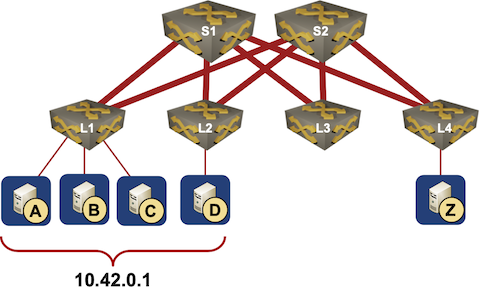Learn from industry experts at the Kubernetes Security and Observability Summit—next week!
The Kubernetes Security and Observability Summit is only 1 week away! The industry’s first and only conference solely focused on Kubernetes security and observability will be taking place online June 3, 2021.
During the Summit, DevOps, SREs, platform architects, and security teams will enjoy the chance to network with industry experts and explore trends, strategies, and technologies for securing, observing and troubleshooting cloud-native applications.
What does security and observability mean in a cloud-native context? What challenges should Kubernetes practitioners anticipate and what opportunities should they investigate? Join us to explore these types of questions and gain valuable insight you’ll be able to take back to your teams.
Speakers & sessions
Tigera’s President & CEO, Ratan Tipirneni, will kick off the Summit with an opening keynote address. Two additional keynotes from Graeme Hay of Morgan Stanley and Keith Neilson of Discover Financial Services will follow. Attendees will then have the opportunity to attend breakout sessions organized into three tracks:
- Stories from the real world
- Best practices
- Under the hood
During these sessions, experts from industry-leading companies like Amazon, Box, Citi, EY, Mirantis, Morgan Stanley, PayPal, Salesforce, and of course, Tigera, will share real-world stories, best practices, and technical concepts related to Continue reading
Multi-cloud is more about Tibco, SAP, Salesforce, Oracle etc than GCP/AWS/AZR.
 Off prem cloud has hype
Off prem cloud has hype
Matching 5G Demands with the Right Technology
The push for 5G-enabled apps reveals the need for data platforms to sync and scale across diverse networks. Are your applications ready to engage?African Women to Drive Digitalization and Transformation: AfChix and Internet Society Renew Partnership

African economies are making bold moves to speed up digitalization and transformation. We want women to play a key part in that. In a new partnership agreement, we are committing to closing the digital gender gap and helping women embrace technology to drive change. Africa’s growing Internet economy has the potential to contribute nearly $180 […]
The post African Women to Drive Digitalization and Transformation: AfChix and Internet Society Renew Partnership appeared first on Internet Society.
Local TCP Anycast Is Really Hard
Pete Lumbis and Network Ninja mentioned an interesting Unequal-Cost Multipathing (UCMP) data center use case in their comments to my UCMP-related blog posts: anycast servers.
Here’s a typical scenario they mentioned: a bunch of servers, randomly connected to multiple leaf switches, is offering a service on the same IP address (that’s where anycast comes from).

Typical Data Center Anycast Deployment
Local TCP Anycast Is Really Hard
Pete Lumbis and Network Ninja mentioned an interesting Unequal-Cost Multipathing (UCMP) data center use case in their comments to my UCMP-related blog posts: anycast servers.
Here’s a typical scenario they mentioned: a bunch of servers, randomly connected to multiple leaf switches, is offering a service on the same IP address (that’s where anycast comes from).

Typical Data Center Anycast Deployment
The Evolution of Labbing
A trip down memory lane on how things have changed in labbing from using prehistoric switches bought on eBay through emulators that took longer to configure than the labs to the present day solutions that can programmatically build a multi-vendor lab in minutes. Kids today don’t know they are born…..
What’s the Best Service Mesh Proxy?
The perfect service mesh implementation wouldn’t use a general-purpose proxy, but would instead use a service mesh specific proxy—one that does no more than the mesh needs and that is written in a performant language with strong security guarantees like Rust.The Hedge 85: Terry Slattery and the ROI of Automation
It’s easy to assume automation can solve anything and that it’s cheap to deploy—that there are a lot of upsides to automation, and no downsides. In this episode of the Hedge, Terry Slattery joins Tom Ammon and Russ White to discuss something we don’t often talk about, the Return on Investment (ROI) of automation.
IXP.GT Improves Speed, Lowers Costs, and Increases Resilience and Security of Guatemala’s Internet

Of the four new Internet traffic exchange points in Latin America, the most advanced is IXP.GT in Guatemala. It started in November 2019 with three participants. A little over a year later it already had 10. Most are Internet service providers (ISPs), plus the university network. “The IXP is the best thing that happened to […]
The post IXP.GT Improves Speed, Lowers Costs, and Increases Resilience and Security of Guatemala’s Internet appeared first on Internet Society.
Day Two Cloud 099: Can Cloud Computing Get Simpler?
We're a good ten years into public cloud as an industry, and cloud operations don't seem to be getting any simpler. Why is that? Is it a problem? If so, can clouds become simpler? Guest Brian Gracely stops by the Day Two Cloud podcast to wrestle with these questions.
The post Day Two Cloud 099: Can Cloud Computing Get Simpler? appeared first on Packet Pushers.
Day Two Cloud 099: Can Cloud Computing Get Simpler?
We're a good ten years into public cloud as an industry, and cloud operations don't seem to be getting any simpler. Why is that? Is it a problem? If so, can clouds become simpler? Guest Brian Gracely stops by the Day Two Cloud podcast to wrestle with these questions.Building real-time games using Workers, Durable Objects, and Unity


Durable Objects are an awesome addition to the Workers developer ecosystem, allowing you to address and work inside a specific Worker to provide consistency in your applications. That sounds exciting at a high-level, but if you're like me, you might be wondering "Okay, so what can I build with that?"
There’s nothing like building something real with a technology to truly understand it.
To better understand why Durable Objects matter, and how newer announcements in the Workers ecosystem like WebSockets play with Durable Objects, I turned to a category of software that I've been building in my spare time for a few months now: video games.
The technical aspects of games have changed drastically in the last decade. Many games are online-by-default, and the ubiquity of tools like Unity have made it so anyone can begin experimenting with developing games.
I've heard a lot about the ability of Durable Objects and WebSockets to provide real-time consistency in applications, and to test that use case out, I've built Durable World: a simple 3D multiplayer world that is deployed entirely on our Cloudflare stack: Pages for serving the client-side game, which runs in Unity and WebGL, and Workers as the Continue reading
Packet Forwarding and Routing over Unnumbered Interfaces
In the previous blog posts in this series, we explored whether we need addresses on point-to-point links (TL&DR: no), whether it’s better to have interface or node addresses (TL&DR: it depends), and why we got unnumbered IPv4 interfaces. Now let’s see how IP routing works over unnumbered interfaces.
The Challenge
A cursory look at an IP routing table (or at CCNA-level materials) tells you that the IP routing table contains prefixes and next hops, and that the next hops are IP addresses. How should that work over unnumbered interfaces, and what should we use for the next-hop IP address in that case?
Packet Forwarding and Routing over Unnumbered Interfaces
In the previous blog posts in this series, we explored whether we need addresses on point-to-point links (TL&DR: no), whether it’s better to have interface or node addresses (TL&DR: it depends), and why we got unnumbered IPv4 interfaces. Now let’s see how IP routing works over unnumbered interfaces.
The Challenge
A cursory look at an IP routing table (or at CCNA-level materials) tells you that the IP routing table contains prefixes and next hops, and that the next hops are IP addresses. How should that work over unnumbered interfaces, and what should we use for the next-hop IP address in that case?